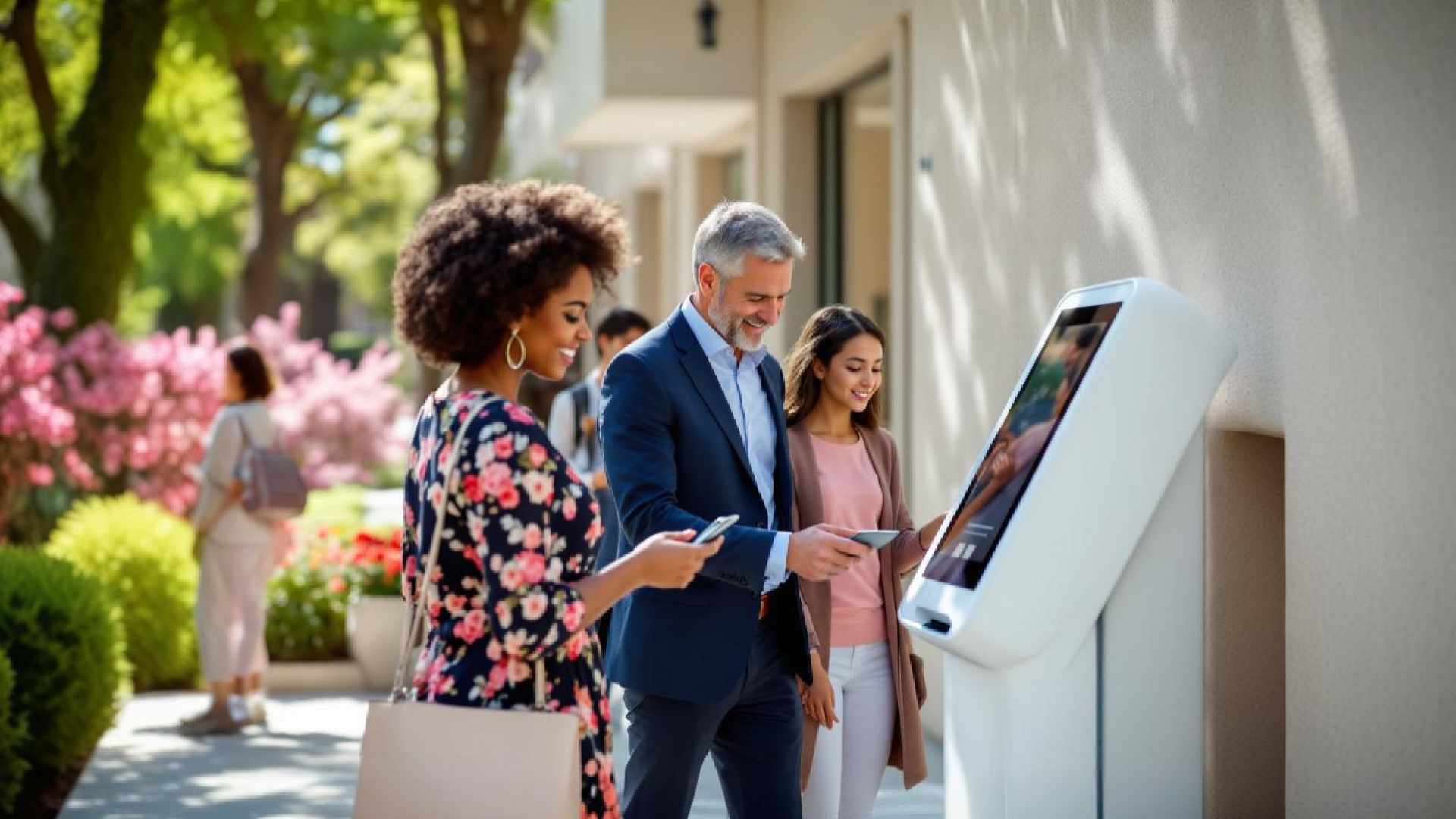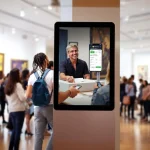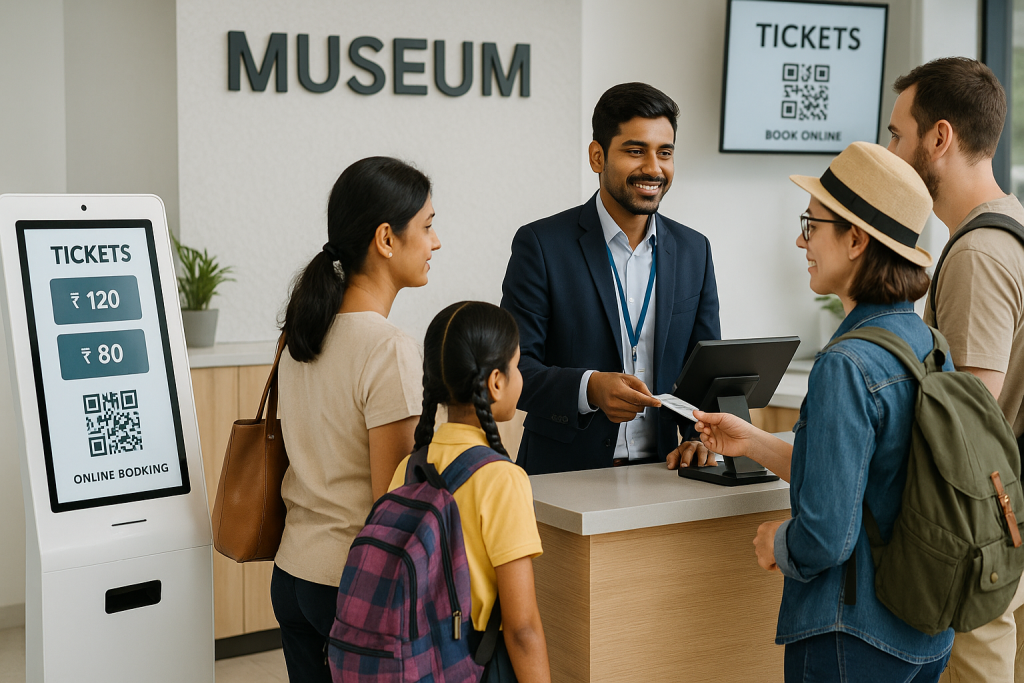Manual payment systems and disconnected processes are quietly draining revenue from museums. From untracked cash transactions to inconsistent reconciliation across gift shops, cafes, and ticket counters, these hidden leaks add up often without clear visibility until it’s too late.
The solution? Digital payment integration. By unifying ticketing, retail, donations, and memberships under a single, automated system, museums gain both operational control and a smoother visitor experience.
This shift not only helps in preventing revenue leaks, but also supports long-term museum revenue optimization. With real-time reporting, secure transactions, and seamless payment options, institutions can improve financial transparency, streamline operations, and ultimately boost profitability.
For museums serious about future-proofing their operations, embracing integrated payment technology isn’t just smart, it’s essential.
Hidden Cost of Outdated Museum Payment Systems
Many museums still rely on legacy payment systems and manual cash handling practices that may seem harmless but quietly erode financial performance. Whether it’s lost receipts, incorrect change, or delayed reconciliation, these small gaps create a larger problem: revenue leakage.
Inconsistent record-keeping across ticket counters, gift shops, and special events increases the risk of human error and internal fraud. And without centralized oversight, finance teams are often left scrambling to reconcile fragmented transactions, wasting hours on what should be automated.
These outdated systems also limit visibility into real-time revenue data, making it harder to make informed decisions or spot trends. The result? Slower reporting, missed opportunities, and ongoing financial inefficiencies.
To drive real museum revenue improvement, institutions need to move beyond patchwork processes and toward streamlined payment solutions. Integrated, digital systems eliminate manual steps, reduce fraud risk, and enable more effective museum financial management. In today’s competitive landscape, reducing revenue leakage isn’t optional, it’s the foundation of sustainable growth.
What Is Digital Payment Integration for Museums?
Digital payment integration in a museum context refers to the unification of all payment channels onsite and online into a single, cohesive system. Instead of managing transactions separately across ticketing, the café, gift shop, and donation portals, everything flows through one connected platform.
This system typically includes automated payment solutions, centralized payment processing, and modern museum ticketing software that syncs with other revenue points. Whether a visitor books online, taps a card for admission, donates via a kiosk, or buys a souvenir, every transaction is recorded in real time and tied to a central financial dashboard.
This level of integration not only simplifies operations but also gives museum staff a clear, holistic view of daily revenue. It enables smarter decision-making, faster reporting, and fewer errors, all while improving the visitor experience.
Ultimately, digital payment integration is the backbone of modern museum financial management, setting the stage for growth, efficiency, and long-term sustainability.
How Integrated Payment Solutions Enhance Museum Revenue
Integrated payment solutions do more than simplify transactions, they actively drive museum revenue optimization and operational success.
First, they streamline the visitor experience. With faster checkouts enabled by mobile payments, contactless terminals, and synced systems guests spend less time in line and more time exploring. That convenience often leads to higher sales in cafes, gift shops, and donation stations.
By reducing reliance on cash and manual entry, these systems also minimize revenue loss. Automated tracking drastically lowers the chances of human error or internal fraud, improving accuracy and transparency in museum financial management.
But perhaps the most overlooked benefit is data. Integrated platforms provide real-time insights across all revenue streams. Museums can analyze what sells, when, and to whom, enabling smarter pricing strategies, targeted promotions, and more responsive programming.
This kind of agility isn’t possible with disconnected tools. Modern financial technology for museums empowers staff to make faster, more informed decisions while cutting back on administrative overhead.
When systems talk to each other, museum operations efficiency improves, and every dollar is accounted for, turning fragmented payments into a unified growth engine.
Real Examples: Revenue Gaps Solved by Payment Integration
Take the example of a mid-sized regional museum that recently underwent a museum digital transformation by switching from cash-based registers to an integrated POS system with online ticketing.
Before the upgrade, daily reconciliation took hours, and weekend revenue reports often contained inconsistencies. Staff struggled with manual data entry, and visitors frequently faced long lines.
Post-integration, the museum saw a 22% increase in gift shop sales and a 30% drop in end-of-day discrepancies. With streamlined museum payment processing, management gained clearer financial oversight, and visitor satisfaction scores improved noticeably.
This shift became a key part of their broader museum profitability strategy.
Improving the Museum Visitor Experience with Contactless Payments
Today’s museum guests expect more than inspiring exhibits, they expect speed, convenience, and flexibility at every touchpoint. Contactless payments for museums deliver exactly that.
By enabling quick, tap-and-go transactions at ticket counters, cafés, and gift shops, museums significantly reduce queue times and streamline entry. Visitors can pay using smartphones, smartwatches, or cards, creating a faster, more seamless payment experience from the moment they arrive.
This also expands museum visitor payment options, especially for international guests. Support for multiple currencies, digital wallets, and cashless payments in museums means fewer barriers and greater accessibility.
Multilingual checkout interfaces and mobile-friendly kiosks further enhance the user journey making guests feel welcome, understood, and in control.
Ultimately, these improvements aren’t just about technology, they’re about creating a visitor experience that’s modern, intuitive, and aligned with how people pay in everyday life.
Key Features to Look for in Museum Payment Systems
When selecting a museum payment system, it’s essential to choose one that addresses both operational needs and the visitor experience.
Here are the must-haves:
- POS + Online Sync: Seamlessly connect on-site and online sales, ensuring real-time inventory tracking and unified reporting.
- Donation Integration: Make it easy for visitors to donate directly via mobile, kiosk, or ticketing systems, enhancing funding opportunities.
- Real-Time Reporting: Gain instant access to revenue data, enabling quicker decision-making and more accurate financial oversight.
- Mobile/Contactless Compatibility: Ensure smooth, fast payments through mobile wallets or contactless cards, catering to modern payment preferences.
- CRM & Membership System Connections: Integrate membership management and customer relationship tools for a more personalized, streamlined experience.
These features are key components of museum payment integration, driving museum tech solutions forward and ensuring a robust, innovative payment for museums.
Best Practices for Implementing Digital Payment Integration in Museums
Successfully implementing digital payment integration in museums requires careful planning and collaboration.
To ensure a smooth transition and maximum impact, follow these museum industry best practices:
- Stakeholder Alignment: Engage key teams early in operations, finance, and IT to ensure the system meets all needs, from backend accounting to frontend user experience.
- Choose Scalable Software: Select museum ticketing software and payment solutions that can grow with your institution. A flexible, scalable platform will support future needs, like event ticketing or e-commerce, without costly upgrades.
- Train Staff and Test Systems: Comprehensive training is essential for staff members to use the new system effectively. Conduct pilot tests to iron out any issues before going live.
- Build Cross-Channel Consistency: Ensure a seamless experience both online and onsite. Whether purchasing tickets on the website or in-person at the box office, payment systems should sync perfectly.
Adopting these digital solutions for museums will help streamline operations and ensure the system supports both day-to-day management and long-term goals.
Final Thoughts
Embracing digital payment integration is more than a technological upgrade, it’s a long-term museum revenue management strategy that helps safeguard your institution’s financial future. With faster transactions, reduced errors, and better data insights, museums can optimize revenue, improve visitor experiences, and position themselves for future growth.
By streamlining payment processes, museums protect against revenue leakage and create smoother, more efficient operations. The shift to digital payment solutions isn’t just about keeping up, it’s about staying ahead.
Don’t wait for another dollar to slip through the cracks. Take control of your museum’s financial future. Reach out now to discover how EveryTicket can transform your payment systems, enhance your visitor experience, and maximize revenue.
Fill out our inquiry form to receive a personalized demo and see the difference for yourself. Start optimizing your revenue today, no more guesswork, just results!



